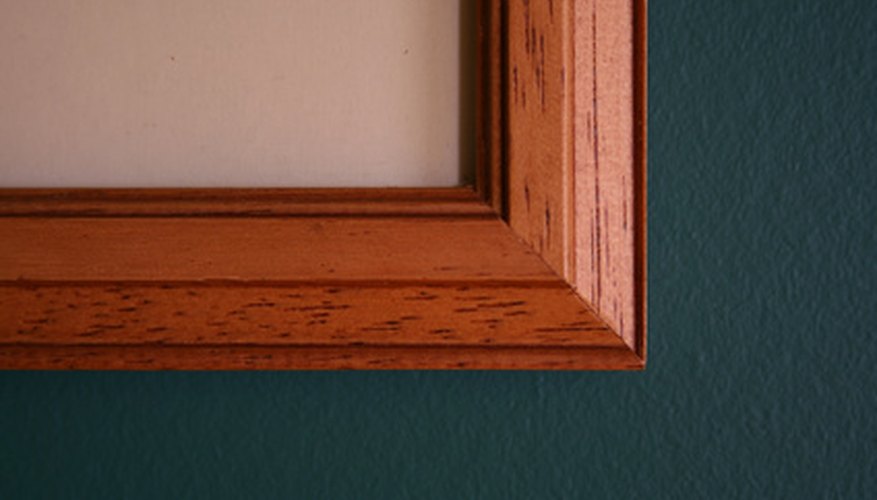Antiques are often damaged, broken or otherwise in need of restoration to look as beautiful as possible.
Restoring an antique can be a simple or complicated process, depending on the extent of the damage, but picture frame restorations are not usually a large project or a complex one. Restoring a picture frame can take some time, but the end results will make the entire process worth the effort.
- Antiques are often damaged, broken or otherwise in need of restoration to look as beautiful as possible.
- Restoring a picture frame can take some time, but the end results will make the entire process worth the effort.
Obtain an appraisal. Antiques sometimes sell to museums or collectors for high prices, especially when they are rare. Before trying to restore the frame, check on the worth. Some picture frames will be worth more when left alone than they will be worth when restored. Restore the picture frame only after the appraisal shows that it is not worth enough to sell.
Remove any glass and the back of the frame. Some frames will have glass while some will not, depending on the age of the antique. Older picture frames often will not have glass due to the high expense of glass during the time period. Usually the glass can be popped out.
- Remove any glass and the back of the frame.
- Some frames will have glass while some will not, depending on the age of the antique.
Study the frame to determine the extent of the damage. In general, the damage should have scratches or minor surface damage. If the frame has rot, termite damage or is otherwise broken, avoid restoration and buy a new frame. Frames that have been badly damaged are not worth the work to restore them.
Use wood glue to reattach any areas where the original glue or seams have come apart. Allow the wood glue to dry completely. This will only be needed when the frame has started coming apart. If the frame is not coming apart, wood glue is unnecessary for the restoration.
- Use wood glue to reattach any areas where the original glue or seams have come apart.
Fill in any cracks or gouges with a filler putty. Use the application tool that comes with the putty to smooth it as close to the wood as possible. Water putty or wood putty are good options. Allow the putty to dry before continuing in the restoration.
Sand the frame using increasingly fine sandpaper. Start with a low grit, such as 200 and gradually work up to a 600 grit paper. Sand with the grain of the wood. Make sure that each area of the frame is looked at to determine the direction of the grain before sanding the side. Some frames will have different grain directions for the sides and the top and bottom. Feel the frame to determine if it is smooth.
Wipe the frame with a soft cloth to remove wood dust. Apply the wood stain to the wood. This evens out the colour of the frame so that the putty is no longer noticeable. Some frames will only need stains where the putty has been applied. Use a medium sized paint brush to apply the stain and then allow the stain to dry.
- Sand the frame using increasingly fine sandpaper.
- Wipe the frame with a soft cloth to remove wood dust.
Apply the sealant to the frame. This protects the frame and wood so that the frame will not be easily damaged.
Put the glass back into the frame. A few drops of glue at the corners or sides of the grooves in the frame will help keep the glass in place. Often it can be slid into the frame along the grooves cut into the frame for the glass.
Allow the frame to dry before adding pictures.
